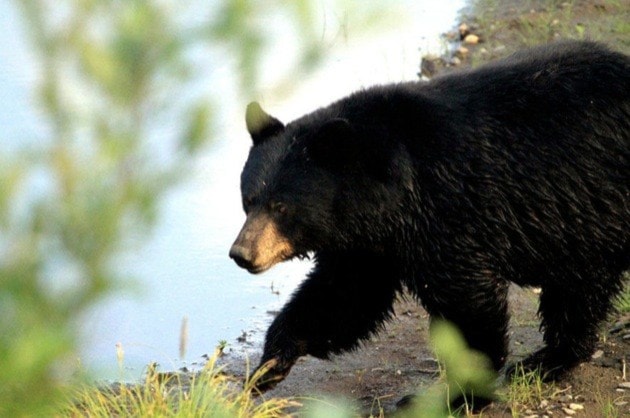A mild winter, warm spring and unusually dry summer have contributed to a plentiful wild berry season this year.
Berries are abundant in surrounding forests and this natural food source is keeping bears out of Sooke.
The bears were able to harvest fruit earlier from plants and are now being well fed with a bumper crop.
Calls to conservation officers reporting bear conflicts are lower this year.
The potential for nuisance bear activity increases in years when berry crops fail and the animals search for alternate food sources.
Black bears are efficient berry-eaters, consuming up to 30,000 berries a day in a good year. They gather berries quickly, using their sensitive, mobile lips and swallowing them whole.
Some seeds pass through the digestive tract unbroken and able to germinate, making black bears important seed dispersers. Each summer, they spread the seeds of berries all over their home ranges.
When the berry season ends, the bears will be looking for food in the valley bottom.
It is important that the community work to ensure no food attractants are available to bears.
As August ends, the bears are going to be hungry and they’re going to be coming in to town for a few months. Recently we have seen a slight increase in bear activity in Sooke.
Last fall, conservation officers reported a dramatic increase in human-wildlife conflicts on the south coast due to an early berry crop. September had left bears scrounging for food to prepare for hibernation.
Bears may forage up to 20 hours a day during autumn, increasing their body weight by 35 per cent in preparation for winter. During this time, they enter hyperphagia, which literally means, “excessive eating.”
Black bears move in response to the seasonal availability of food and have excellent memories, particularly regarding food sources.
Bears are able to learn about food types and locations, and reapply that knowledge over time and space – a sure sign of intelligence.
We need to be proactive and be prepared.
When the fruit trees start to ripen in town, the bears will return as the berry crops dry up.
If there is lots of green grass in the forest, the bears should stay out of town and out of trouble.
But if they start accessing fruit trees and garbage right way, then it’s going to be really hard to get them going back to eating natural foods.
Residents are reminded to pick ripe fruit from fruit trees, keep their garbage out of reach of bears in secure locations and not to put garbage bins out the night before collection day.
Wild Wise Sooke is also reminding residents to take in their bird feeders, clean up pet food that is left outside, and clean their barbecues.
Be bear wise.
•••
Debbie Read is an urban wildlife conflict specialist with Wild Wise Sooke.
